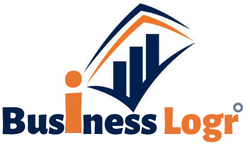
Introduction
When it comes to purchasing a car, many people opt for a car loan to finance their purchase. Understanding the costs associated with a car loan is crucial to making informed financial decisions. In this article, we will delve into the payment process and shed light on the various expenses involved in a $40,000 car loan.
The Principal Amount: $40,000
The principal amount refers to the total sum borrowed for the car loan. In this case, the loan is for $40,000, which represents the cost of the car you wish to purchase. It is important to note that the principal amount does not include any interest or additional fees.
Interest Rates and Annual Percentage Rate (APR)
Interest rates play a significant role in determining the overall cost of a car loan. Lenders charge interest as a percentage of the principal amount. The rate you receive can vary based on factors such as your credit score, loan term, and market conditions. The Annual Percentage Rate (APR) is a broader measure that includes both the interest rate and any additional fees charged by the lender. It gives you a more accurate picture of the total cost of borrowing.
Loan Term and Monthly Payments
The loan term refers to the duration of the loan, typically measured in months. Common terms range from 36 to 72 months, although longer terms are also available. The loan term directly affects your monthly payments. Generally, a longer term will result in lower monthly payments, but it also means paying more interest over the life of the loan. On the other hand, a shorter term will lead to higher monthly payments but less interest paid overall.
Down Payment and Loan-to-Value Ratio (LTV)
A down payment is an upfront payment made at the time of purchase. It reduces the loan amount and lowers the loan-to-value ratio (LTV). LTV is the percentage of the car’s value that is financed through the loan. For example, if you make a $4,000 down payment on a $40,000 car, your LTV would be 90%. Lenders often prefer lower LTV ratios as they indicate lower risk, and it may also help you secure a better interest rate.
Additional Fees and Charges
Apart from the principal amount and interest, there may be additional fees and charges associated with a car loan. These can include loan origination fees, documentation fees, title fees, and other administrative costs. It’s essential to carefully review the terms and conditions of the loan to understand all the fees involved. These fees can add to the overall cost of the loan and impact your monthly payments.
Total Interest Paid and Total Cost of the Loan
The total interest paid represents the cumulative amount you will pay on top of the principal. It is influenced by the interest rate, loan term, and loan amount. The longer the loan term and the higher the interest rate, the more interest you will pay over time. The total cost of the loan is the sum of the principal amount and the total interest paid. This figure reflects the overall expense of financing your car purchase.
Conclusion
Understanding the costs associated with a $40,000 car loan is crucial for making sound financial decisions. By considering factors such as interest rates, loan terms, down payments, and additional fees, you can gain a clearer understanding of the payment process. Being aware of the total interest paid and the total cost of the loan allows you to evaluate your financial capabilities and choose the most suitable financing option. Remember to compare offers from different lenders and carefully review the terms and conditions to make an informed decision.




